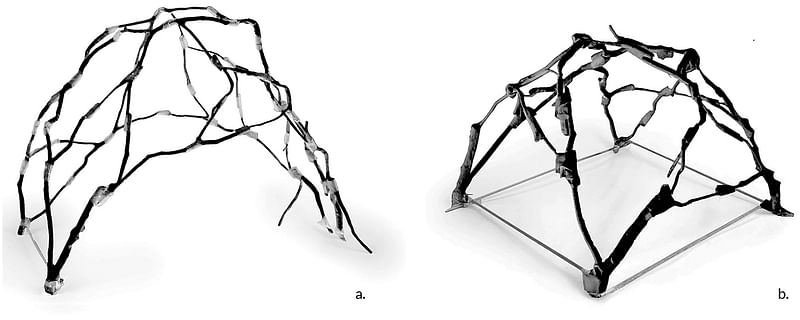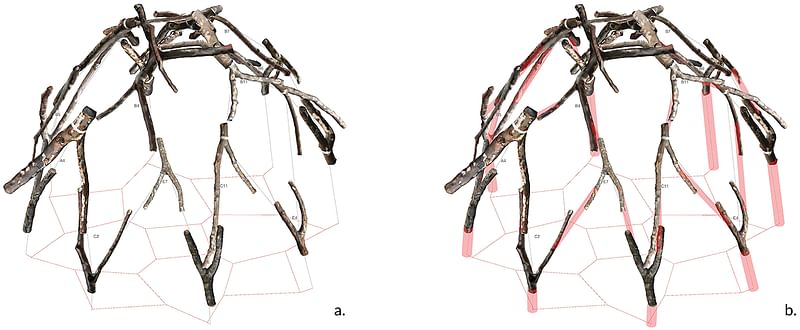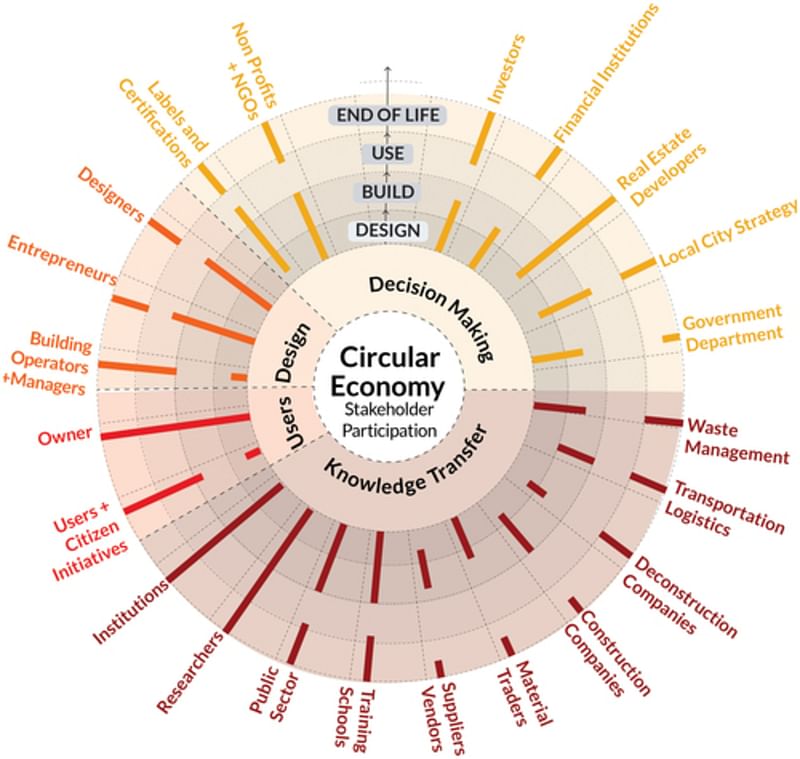Two 2025 TAD Research Contribution Award winners explore robotic fabrication and circular economy applications
By Josh Niland|
Wednesday, Feb 12, 2025

Related
The journal Technology | Architecture + Design (TAD) has announced the two 2025 winners of the TAD Research Contribution Award. The award was founded in 2020 and recognizes the most outstanding peer-reviewed research published in the journal. TAD is published by the Association of Collegiate Schools of Architecture (ACSA) through Taylor and Francis.
Winning projects delved into the possibility of robotics and mixed reality (MR) fabrication strategies and an application of data visualization and circular economy concepts to enable sustainable housing. The two winners for 2025 are:
2025 TAD Research Contribution Award 1: Tim Cousin, Latifa Alkhayat, Natalie Pearl, Christopher B. Dewart & Caitlin Mueller for Wild Wood Gridshells: Mixed-Reality Construction of Nonstandard Wood in TAD 7.2: Circularity, edited by Matan Mayer.


Abstract: "Irregular wood is often downcycled despite having significant embedded strength. Reintegrating this wood into structural assemblies can improve material efficiency in the built environment. This work implemented material logic in a design-to-fabrication workflow for building structures using bifurcated tree branches to leverage this potential. This process is demonstrated through the design and construction of a prototype. A user-oriented computational interface is proposed that manages irregular geometries, matching and optimization algorithms, and structural simulation for design iteration. The demonstrated workflow, which concludes with augmented reality (AR) assisted fabrication, facilitates designing with varying materials, enabling upcycling a wide range of nonstandard building elements. At scale, this methodology can significantly reduce the environmental impact of construction."
2025 TAD Research Contribution Award 2: Naomi Keena, Avi Friedman & Ava Klein for Data Visualization for a Circular Economy: Designing a Web Application for Sustainable Housing in TAD 7.2: Circularity, edited by Matan Mayer.


Abstract: "An impediment to effective Circular Economy (CE) implementation in residential buildings is the lack of standardized building data to represent a building’s life cycle, from material sourcing to end-of-use apparatus. This paper presents an overarching methodological approach for creating a circular web application named Data Homebase (DHB). DHB integrates housing data into Housing Passports (HPs), visualizing calculations of estimated energy use, carbon emissions, and affordability building indexes. Using data-driven narratives, DHB outlines a building’s degree of circularity and potential for improved environmental outcomes via circular strategies. The passport system and data-based approach provide a once-missing portal entry for housing stakeholders seeking actionable circularity measurements. This research contributes to the long-term elucidation of key decision-making processes for homebuilding within a comprehensive tool to achieve a far-reaching CE."

Share
0 Comments
Comment as :